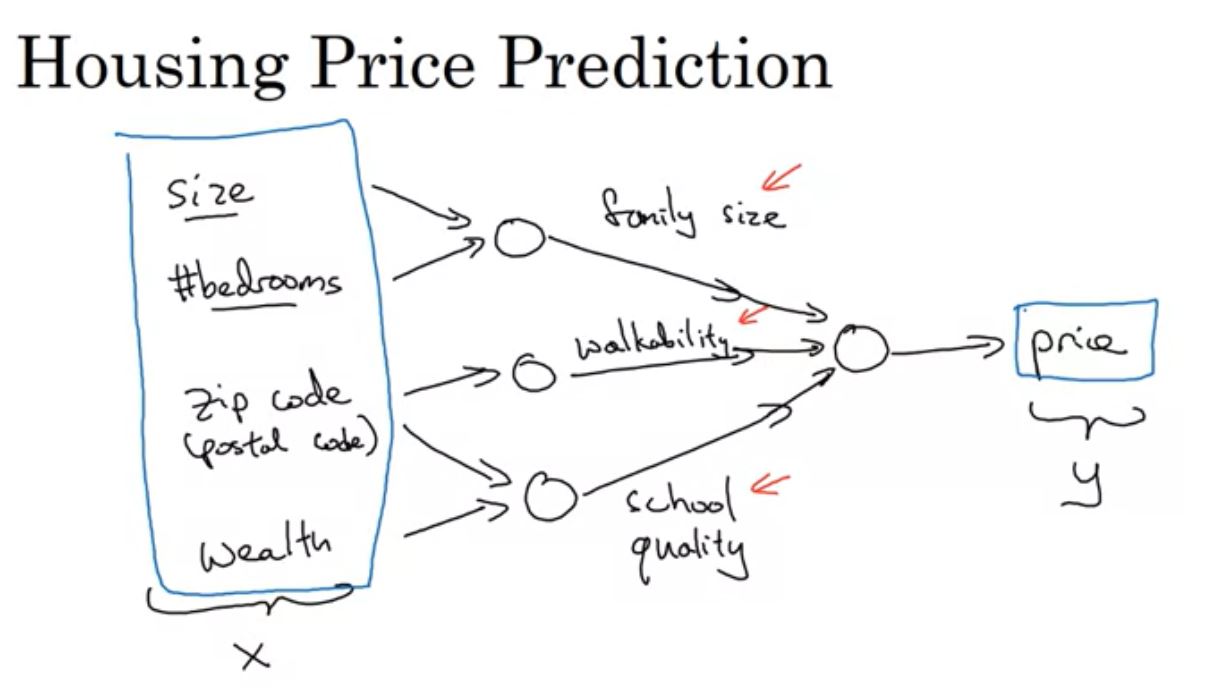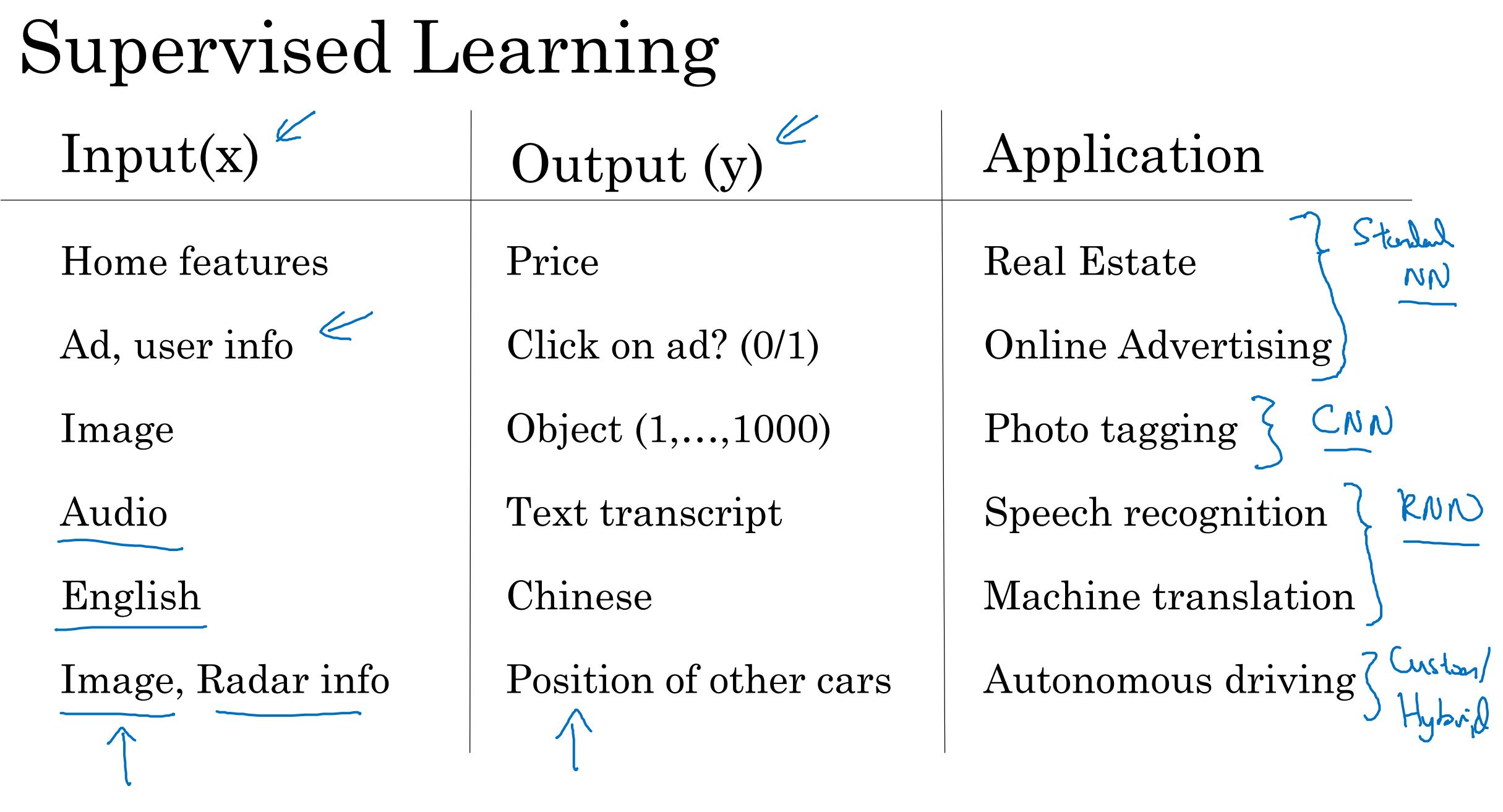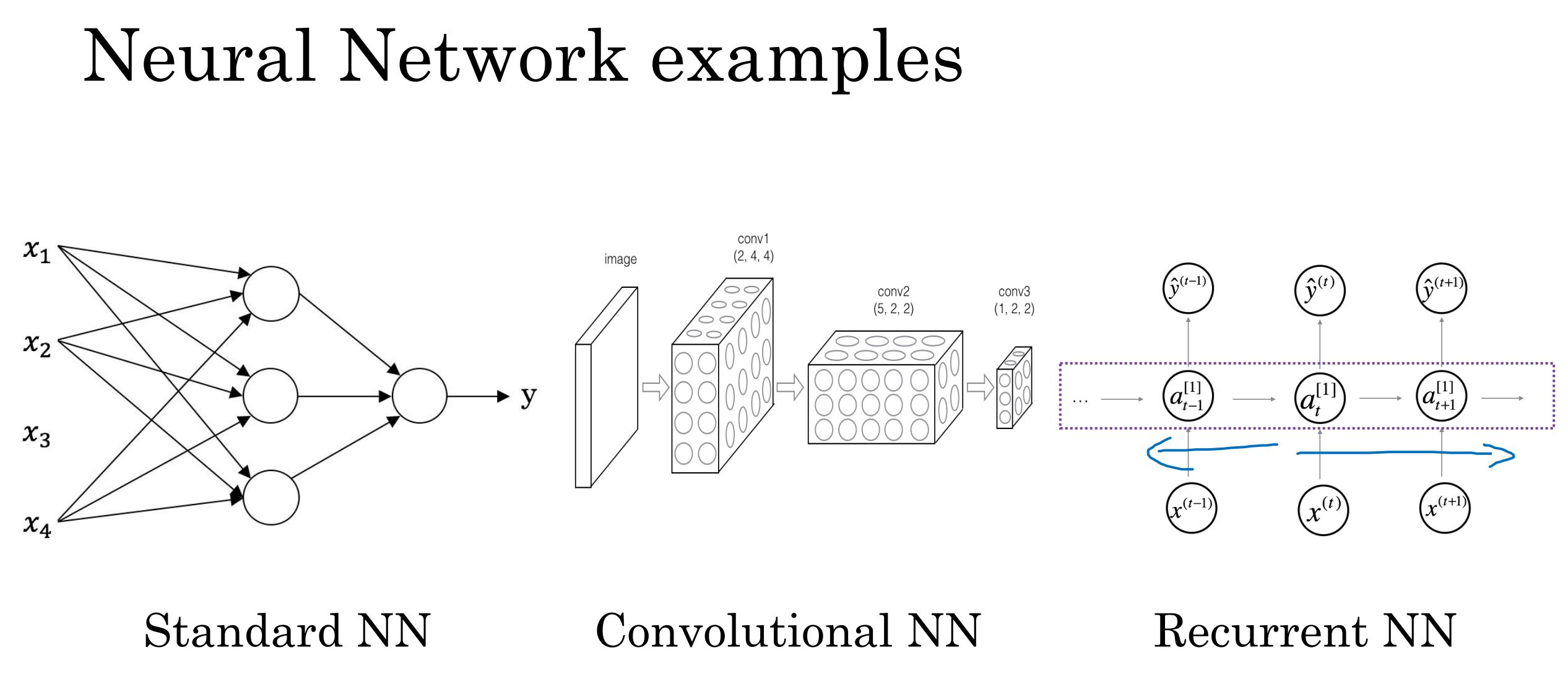DL Coursera 1 - NN & DL - W1: Intro to DL
Posted on 31/08/2019, in Machine Learning.This note was taken when I started to follow the specialization Deep Learning on Coursera. You can audit the courses in this specialization for free. In the case you wanna obtain a certification, you have to pay.
Lectures in this week:
tocIn this post
keyboard_arrow_right
Go to Week 2.
Documentation
- Beautifully drawn notes by Tess Ferrandez.
- Next steps?: Taking fast.ai courses series as it focuses more on the practical works (ref).
Welcome
- AI is the new electricity.
- Electricity had once transformed countless industries: transformation, manufacturing, healthcare, communications,…
- AI will now bring about an equally big transformation.
- What you’ll learn:
- (4 weeks) Foundation: NN and DL
- How to build a new network / dl network & train it on data
- Build a system to recognize cat! <– recognize a cat
- (3 weeks) Improving Deep Neural Networks:
- Hyperparameters tuning
- Regularization
- Optimization: momentum armrest prop and the ad authorization algorithms.
- (2 weeks) Structuring your ML project
- It turns out that the strategy for building a machine learning system has changed in the era of deep learning.
- train/test sets come from diff distributions <- frequently happen in DL
- end-to-end DL (when should/shouldn’t?)
- Convolutional Neural Networks (CNNs) [convolutional: tính chập]
- usually applied to images!
- NLP (building sequence models)
- RNN (Recurrent Neural Network) <– nếu sequence data thì thường dùng cái này!
- LSTM (Long Short Term Memory Model)
- applied to speech recognition / music generation
- NLP = sequence of words
- (4 weeks) Foundation: NN and DL
Introduction to Deep Learning
What is a neural network?
- Lecture notes + Lecture slides
- Depp Learning = training Neural Networks (sometimes very large NN)
- Housing price prediction
- Very simple NN: ReLU function (Rectified Linear Units)
- y = price, x = size of house
- Multiple NN:
- input layer - hidden layer - output layer
- middle layer is density connected vì mọi inputs đều liên kết với mọi node trong middle layer (không giống cái hình ở trên là có những input không kết nối với các node trong middle layer)

- Very simple NN: ReLU function (Rectified Linear Units)
Supervised Learning with Neural Networks
- Lecture notes + Lecture slides
- all the economic value created by neural networks has been through supervised learning.


- Supervised Learning: structured data vs unstructured data
- structured data: each of feature has a very well defined meaning.
- unstructured data: audio, images, words in text <– thanks to NN, DL, computers are now much better at interpreting this type of data.
Why is Deep Learning taking off?
- Lecture notes + Lecture slides
-
Tại sao ý tưởng của DL có từ lâu mà tới giờ nó mới phát triển thật sự như vậy?

- If you wanna hit a very high performance, you need 2 conditions:
- train a bigger network: train a big enough NN in order to take advantage of the huge amount of data <– take to long to train
- throw more data at it: you do need a lot of data <– we often don’t have enough data
- Scale drives DL progress:
- Data
- Computation (CPU, GPU)
- Algorithms
- Ex: changing from sigmoid function to ReLU function make faster
- The process of training a NN is iterative (Idea> Code > Experiment > Idea …): faster computation helps to iterate and improve new algorithm.
About this course & Course Resources
- Week 1: Introduction
- W2: Basics of NN programming
- W3: One hidden layer NN
- W4: Deep NN
